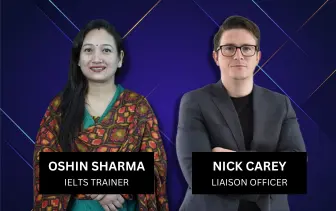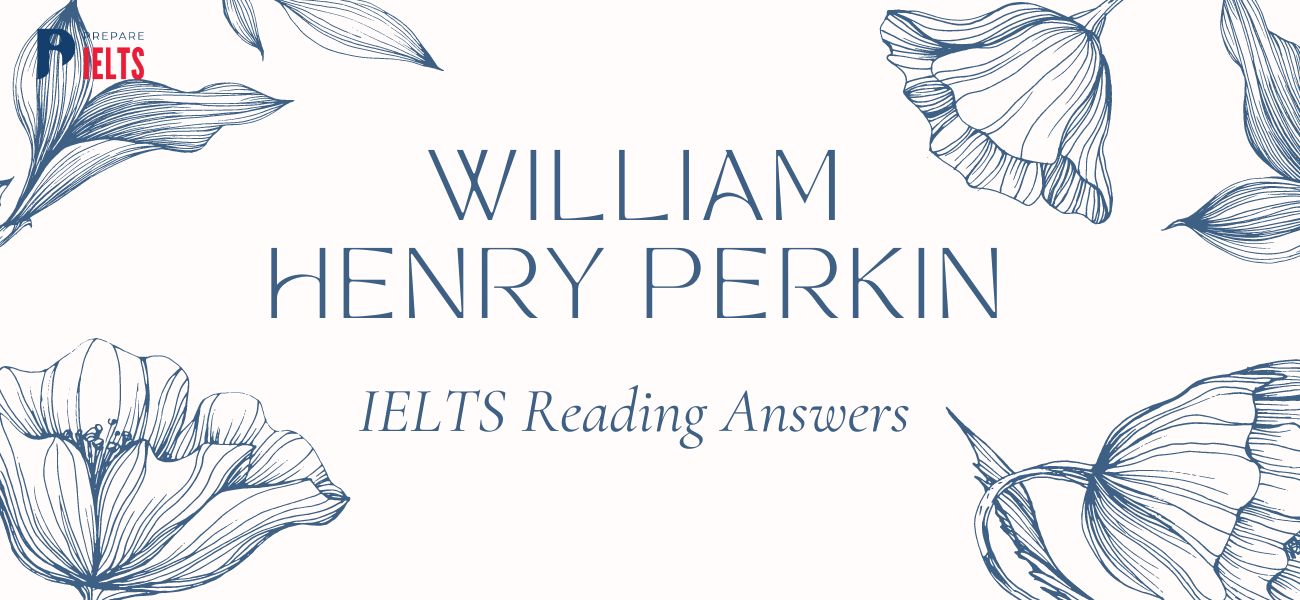
Overview
IELTS aspirants must practice reading comprehension to enhance their language proficiency and perform well on the reading component of the test. "William Henry Perkin is one of the many topics that can be researched; it's an intriguing subject that enlightens and captivates.
This blog will examine the main ideas and significance of the subject in the IELTS reading section, offering candidates information and techniques to improve their understanding and performance. So, let's start with the blog!
William Henry Perkin - IELTS Reading Passage
William Henry Perkin
On 12 March 1838, William Henry Perkin was born in London, England.
Curiosity drives the early Perkins to the arts, sciences, photography and engineering till he gets into the laboratory of his late grandfather. It developed his enthusiasm towards chemistry.
As a student at the City of London School, Perkin was wholly involved in the study of chemistry. Perkins' talent and devotion to the subject of chemistry are recognized by his teacher. He attended Michal Faraday's lectures at the Royal Institution by the encouragement of Thomas Hall. His speeches developed his interest towards chemistry further. Later, at the age of 15, 1853, Perkin attended the Royal College of Chemistry.
German chemist August Wilhelm Hofmann was head at the Royal college of chemistry during the time of Perkin’s enrolment. Hofmann identified the perkin's scientific gifts, and he became the youngest assistant of Hofmann. After some time, Perkin got his fame and both through his scientific breakthrough.
Quinine is the only feasible medical treatment for malaria at that time. The drug is extracted from the cinchona tree's bark, which is situated in South America. The demand for the drug increased by 1856. Hofmann made some comments about the synthetic substitute for quinine and his star pupil takes up as a challenge.
In 1856, during his vacation, he was trying to manufacture quinine from aniline (inexpensive and readily available coal tar waste) in his laboratory at the top of his family’s house. Out of his best efforts, he didn't get the quinine, but some mysterious dark sludge. Fortunately, Perkin's scientific training and nature made him explore the substance further. At the various stages of the experimental process, he added the potassium dichromate and alcohol into the aniline, which produced a deep purple solution. Louis Pasteur’s words ‘chance favours only the prepared mind’, proved to be true; he saw the unexpected potential of his find.
Usually, the textile dye was made from natural resources such as plants and animal excretions. Few of these, like the glandular mucus of snails, were both expensive and difficult to get. At that time, the rich can only afford the purple colour, which is extracted from the snail as this is so costly. Moreover, the tendency of the natural dyes is found to be muddy in hue and fade quickly. Perkin’s discovery was against this backdrop.
Perkin understood that his purple solution could be used for colour fabric, which is the world’s first synthetic dye. He patented it as he realised the importance of his finding. One of the fascinating reactions of Perkin quickly found that the new dye has commercial possibilities.
Originally, Perkin named his dye Tyrian Purple. Later, it became commonly known as mauve. By asking advice to the Scottish dye works owner Robert Pullar, he understood that the dye manufacturing would be worthwhile if the colour remained fast (i.e. would not fade) and if it is relatively low cost. His mentor Hofmann objected to him in a fierce manner, so he left the college and gave birth to the modern chemical industry.
Perkin set up a factory, near London, with the help of his father and brother. Coal tar is cheap and plentiful as this is an almost limitless by-product of London’s street lighting. The dye works started producing the world’s first synthetically dyed material in 1857. The Empress Eugenie of France, boosted the commercial part of the company as the new colour flattered her. Mauve becomes a necessary shade for all the fashionable ladies in that country.
In public, England’s Queen Victoria appears wearing a mauve gown which brought rage in England. The dye was both fast and bold, and the public demand was increased. Perkin returns to the drawing board.
Though Perkin's first discovery itself brought him fortune and achievements, the chemist continued his research. He developed and introduced several other dyes including aniline red (1859) and aniline black (1863), and Perkin’s green in the late 1860s. Perkin’s synthetic dye discoveries resulted in more than just decorative purposes. The dyes also become important to medical research in many ways. For example, researchers are able to identify such bacilli as tuberculosis, cholera, and anthrax, which were invisible microbes and bacteria before. Artificial dyes continue to play an important role even today. Its current use in the search for a vaccine against malaria, which could have pleased the Perkin.
Also Check: 60+ IELTS Essay Topics 2024: IELTS Writing Task 2
William Henry Perkin - Question and Answer
Questions 1 - 5
Complete the flowchart below.
Choose NO MORE THAN TWO WORDS from the passage for each answer.
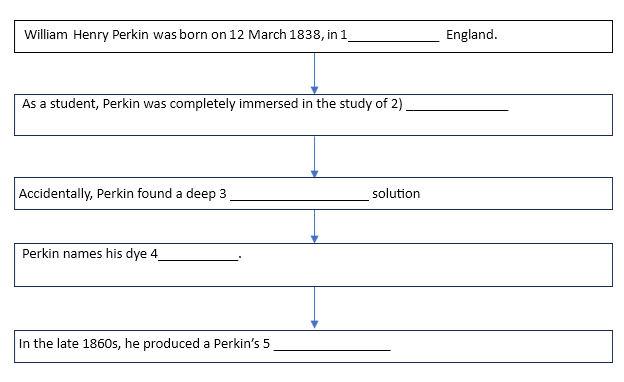
Read IELTS Reading Flow Chart Completion to expand your knowledge about flow chart completion question type
Answer 1: London
Explanation 1: According to teh 1st line of the passage, On 12 March 1838, William Henry Perkin was born in London, England.
Answer 2: Chemistry
Explanation 2: According to the 1st line of paragraph 3, As a student at the City of London School, Perkin was wholly involved in the study of chemistry.
Answer 3: Purple
Explanation 3: According to the 4th and 5th line of passage 6, At the various stages of the experimental process, he added the potassium dichromate and alcohol into the aniline, which produced a deep purple solution.
Answer 4: Tyrian Purple
Explanation 4: According to the 1st line of paragraph 9, Originally, Perkin named his dye Tyrian Purple.
Answer 5: Green
Explanation 5: According to the 2nd line of the last paragraph, He developed and introduced several other dyes including aniline red (1859) and aniline black (1863) and Perkin’s green in the late 1860s.
Also read: The Step Pyramid of Djoser - IELTS Reading Answers
Questions 6 - 10
Choose the correct letter, a, b, c or d, as you answer each question.
6. Whose lectures Perkin attended at the Royal Institution?
-
August Wilhelm Hofmann
-
Thomas Hall
-
Michal Faraday
-
Niels Bohr
7. What is the age when Perkin attended the Royal College of Chemistry?
-
15
-
18
-
20
-
14
8. Where is the quinine extracted from?
-
Tree’s bark
-
Herbs
-
Cinchona tree’s bark
-
Dye
9. How the Tyrian Purple became commonly known as?
-
Purple
-
Perkin’s Purple
-
Aniline
-
Mauve
10. Where did Perkin set up a factory?
-
London
-
Bristol
-
Leicester
-
Norwich
Answer 6: c. Michal Faraday
Explanation 6: According to the 2nd line of the 3rd paragraph, He attended Michal Faraday's lectures at the Royal Institution by the encouragement of Thomas Hall.
Answer 7: a. 15
Explanation 7: According to the 4th and 5th line of paragraph 3rd, Later, at the age of 15, 1853, Perkin attended the Royal College of Chemistry.
Answer 8: c. Cinchona Tree’s bark
Explanation 8: According to the 1st and 2nd line of paragraph 5, Quinine is the only feasible medical treatment for malaria at that time. The drug is extracted from the cinchona tree's bark, which is situated in South America.
Answer 9: d. Mauve
Explanation 9: According to the 1st line of paragraph 9. Originally, Perkin named his dye Tyrian Purple. Later, it became commonly known as mauve.
Answer 10: a. London
Explanation 10: According to teh 1st line of paragraph 10, Perkin set up a factory, near London, with the help of his father and brother.
Also read: The Return of the Huarango - IELTS Reading Answers
Questions 11 - 14
Answer the questions below.
Write THREE WORD AND/OR A NUMBER from the passage for each answer.
11. Which subject that Perkin is interested in?
12. When the quinine drug demand increased?
13. Who was head at the Royal College of Chemist when Perkin enrolled?
14. Who appeared in the public wearing a mauve gown which brought rage in England?
Answer 11: Chemistry
Explanation 11: According to the 1st and 2nd line of paragraph 3, As a student at the City of London School, Perkin was wholly involved in the study of chemistry. Perkins' talent and devotion to the subject of chemistry are recognised by his teacher.
Answer 12: 1856
Explanation 12: According to the 1st, 2nd and 3rd line of paragraph 5, Quinine is the only feasible medical treatment for malaria at that time. The drug is extracted from the cinchona tree's bark, which is situated in South America. The demand for the drug increased by 1856.
Answer 13: August Wilhelm Hofmann
Explanation 13: According to the 1st line of paragraph 4, German chemist August Wilhelm Hofmann was head at the Royal college of chemistry during the time of Perkin’s enrolment.
Answer 14: England’s Queen Victoria
Explanation 14: According to the 1st line of paragraph 11, In public, England’s Queen Victoria appears wearing a mauve gown which brought rage in England.
Also read: What is the IELTS Vocabulary?
Register Now, for a free Mock test - Join Today!
Conclusion
The path to success on the IELTS is complex, and one of the most important components is reading comprehension. By delving into various subjects, such as "William Henry Perkin" and many others, candidates might establish a strong basis for tackling the reading portion. IELTS candidates can use the tactics and advice provided in this blog as a compass to help them reach their target scores. Let this serve as inspiration to keep practising since, in the world of language acquisition, tenacity is the key to unmatched success.
We hope you now know how to respond to the IELTS reading passage questions. But, if you are still looking for more details or would like to prepare for IELTS, you can contact Prepare IELTS exam (PI) expert counsellors for further guidance. Our team of education experts is dedicated to providing you with the best test material and guidance to ace the IELTS exam. You can get a one-on-one counselling session and an IELTS online practice test via our platform. Contact us at info@prepareieltsexam.com or call us at +91 9773398388 for further queries.
Latest Blogs
-

IELTS Score for Canada: Minimum IELTS Requirement for Canada 2025
2024-09-27 18:24:14
-
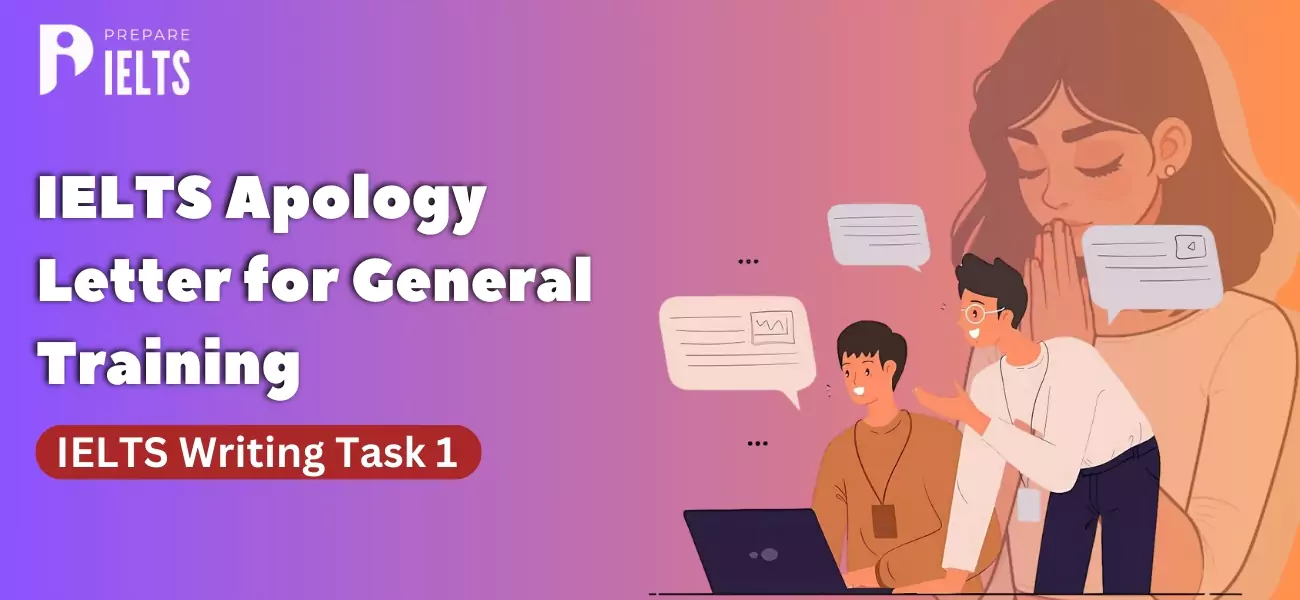
IELTS Apology Letter for General Training: IELTS Writing Task 1
2024-09-25 16:38:03
-

Minimum IELTS Score for Australia: Student Visas, Universities, and PR in Australia
2024-09-23 18:09:51
-

Common IELTS Speaking Topics with Answers
2024-09-20 18:21:56
-

Describe a foreign culture that you like: IELTS speaking cue card
2024-09-18 16:14:11
-

Describe a Rainy Day IELTS Speaking cue card
2024-09-18 11:11:32
-
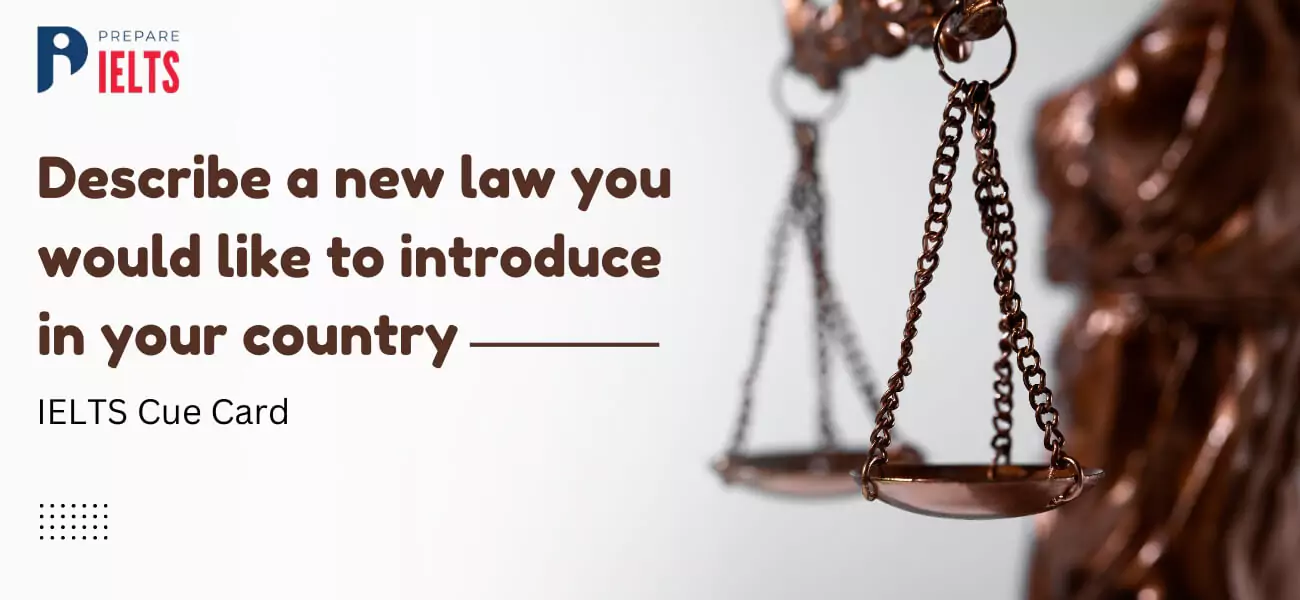
Describe a new law you would like to introduce in your country IELTS cue card
2024-09-13 17:17:46
-
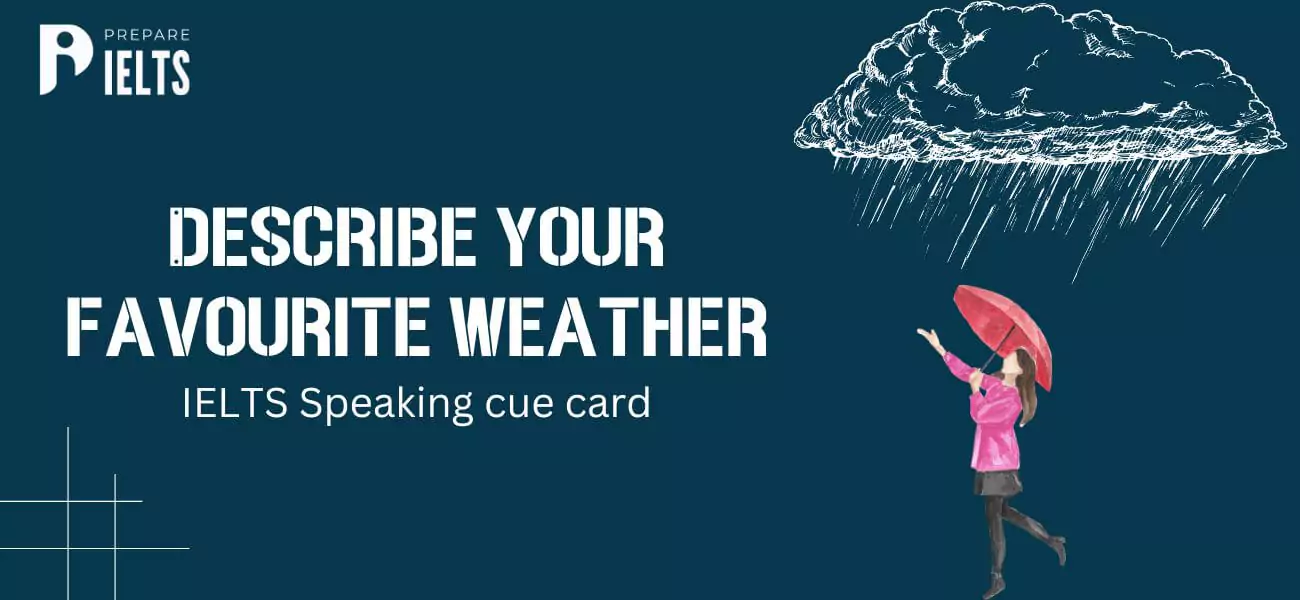
Describe your favourite weather: IELTS cue card
2024-09-11 18:01:28
-

Describe an enjoyable journey by public transport: IELTS cue card
2024-09-09 18:05:45
-

Step-by-Step Guide to IELTS Registration in India for the Year 2024 & 2025
2024-09-07 12:59:51
